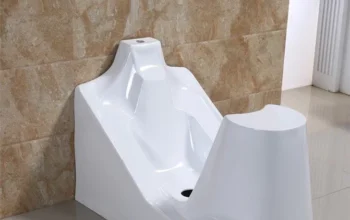Drawer slides are vital components used in cabinetry, office furniture, toolboxes, medical equipment, and industrial storage systems. Their primary function is to allow drawers to open and close smoothly while supporting varying levels of weight. To ensure consistent performance, safety, and durability, drawer slides must be manufactured according to strict quality standards. These standards help manufacturers produce reliable products that meet customer expectations and comply with industry norms.
Importance of Quality Standards in Drawer Slide Manufacturing
Manufacturing standards serve as benchmarks that guide the entire production process—from raw material selection and mechanical design to final testing and quality assurance. They help ensure that each drawer slide performs as intended under different conditions and use cases.
A reputable Drawer Slides Manufacturer will adhere to these standards to guarantee precision, durability, and smooth operation in every product. This compliance also assures customers that the drawer slides are safe, efficient, and built to last.
Key Standards and Certifications in the Industry
Several national and international organizations have established standards that define acceptable performance, strength, and endurance levels for drawer slides. These include:
1. ANSI/BHMA Standards (USA)
The American National Standards Institute (ANSI), in collaboration with the Builders Hardware Manufacturers Association (BHMA), has developed a set of rigorous standards for drawer slides and other cabinet hardware.
The most commonly referenced standard is ANSI/BHMA A156.9, which outlines performance requirements for cabinet hardware, including:
- Cycle Testing: Drawer slides must endure 50,000 or more open-and-close cycles while maintaining functionality.
- Load Capacity: Rated to support weights from 50 to over 500 pounds, depending on the classification.
- Corrosion Resistance: Subjected to salt spray tests to measure resistance to rust and environmental exposure.
- Impact Testing: Evaluates how well slides handle sudden shocks or misuse.
BHMA-certified products are marked with performance grades based on durability, strength, and finish quality.
2. ISO 9001: Quality Management Systems
While not specific to drawer slides, ISO 9001 is an international standard that sets criteria for quality management systems (QMS). Manufacturers who are ISO 9001 certified demonstrate a commitment to consistent production quality, customer satisfaction, and continuous improvement.
ISO certification covers areas such as:
- Documented production processes
- Regular quality inspections
- Customer feedback systems
- Corrective and preventive actions
Drawer slide manufacturers that follow ISO 9001 standards tend to maintain high levels of consistency and product reliability.
3. EN Standards (Europe)
In Europe, EN 15338 is the standard that specifies requirements for furniture fittings such as drawer slides. It defines performance classes based on dynamic loading, test duration, and safety.
EN 15338 includes:
- Durability Tests: Measures slide performance under repeated use.
- Static Load Tests: Evaluates how much weight the slide can bear without permanent deformation.
- Corrosion and Wear Resistance: Similar to ANSI tests, with added climatic exposure simulation.
- Safety Features: Checks for locking mechanisms, anti-tip functions, and controlled closing systems.
This standard helps ensure uniform performance among European drawer slide products.
4. RoHS Compliance
Restriction of Hazardous Substances (RoHS) compliance ensures that drawer slides do not contain harmful materials like lead, cadmium, or mercury above regulated levels. Although not a performance standard, RoHS is crucial for environmental safety and consumer health, especially for hardware used in home and healthcare environments.
RoHS-compliant drawer slides are safer to handle, dispose of, and recycle.
Testing Methods and Quality Control
High-quality drawer slide manufacturers use a range of testing methods to ensure compliance with these standards. Common tests include:
- Load Testing: Verifying the slide’s capacity under static and dynamic weight conditions.
- Cycle Life Testing: Repetitive opening and closing to simulate years of use.
- Environmental Testing: Exposure to humidity, salt spray, and temperature fluctuations.
- Noise and Friction Measurement: Ensuring silent, smooth movement without sticking or grinding.
Quality control is also integrated into every stage of production—from inspecting incoming raw materials to final product audits before packaging.
Conclusion
Manufacturing standards for drawer slides serve as the foundation for product reliability, safety, and customer satisfaction. Whether governed by ANSI/BHMA, ISO, EN, or RoHS regulations, these standards ensure that drawer slides perform consistently under varying conditions. Adherence to such guidelines is a mark of professionalism and commitment to excellence.
Choosing a trusted Drawer Slides Manufacturer ensures that the drawer slides you receive are rigorously tested, properly certified, and built to meet both industry expectations and specific user needs. By prioritizing quality standards, manufacturers contribute to longer-lasting and more dependable furniture and storage solutions across the globe.




